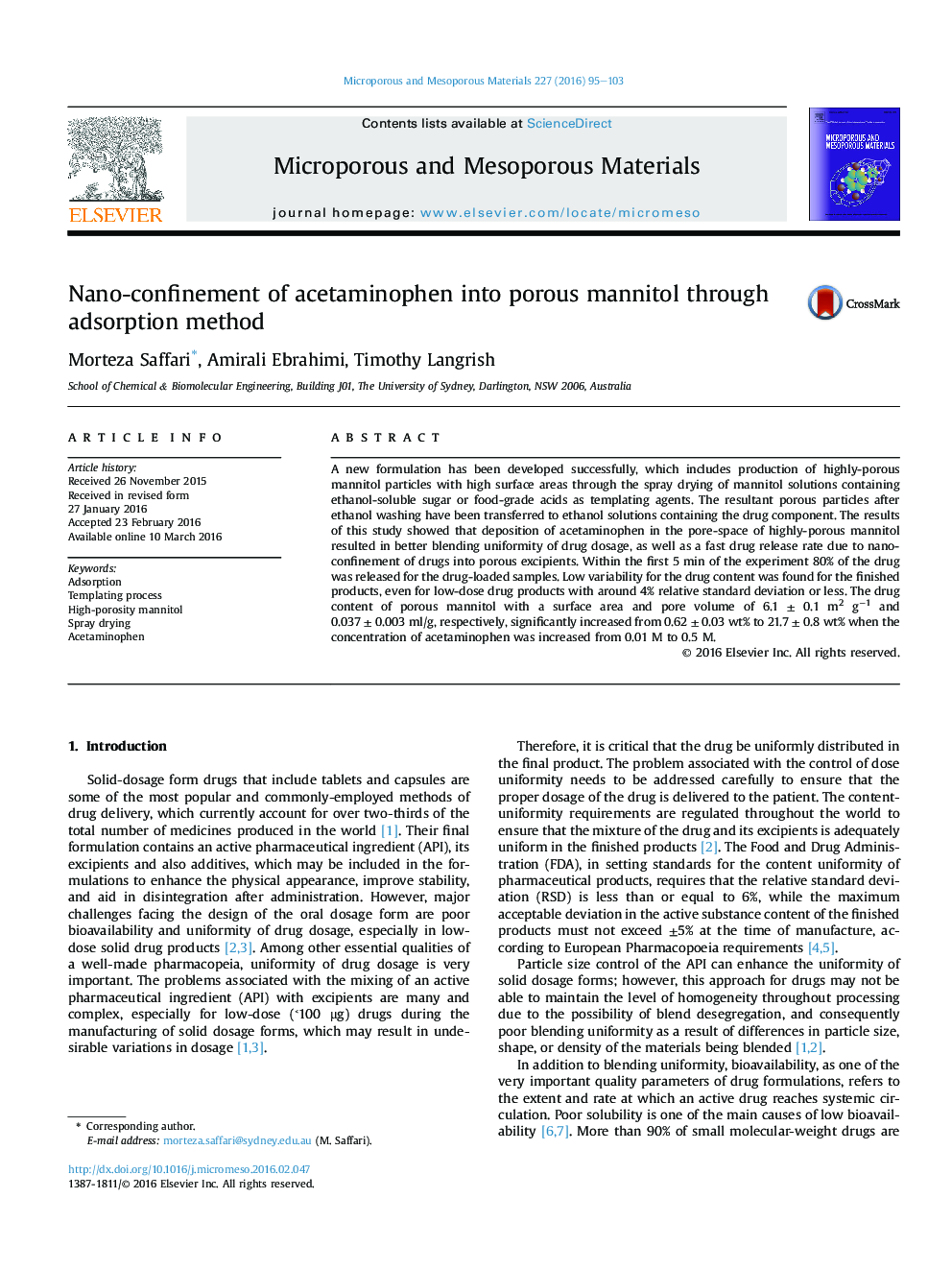| Article ID | Journal | Published Year | Pages | File Type |
|---|---|---|---|---|
| 72142 | Microporous and Mesoporous Materials | 2016 | 9 Pages |
•Developing a new production process for high-porosity mannitol particles.•Successful drug-loading of porous mannitol through an adsorption method.•Low variability for the drug content for the finished products.•Considerable effect of adsorption method on release rate of drug-loaded mannitol.•Significant enhancement in the tableting properties of the final formulation.
A new formulation has been developed successfully, which includes production of highly-porous mannitol particles with high surface areas through the spray drying of mannitol solutions containing ethanol-soluble sugar or food-grade acids as templating agents. The resultant porous particles after ethanol washing have been transferred to ethanol solutions containing the drug component. The results of this study showed that deposition of acetaminophen in the pore-space of highly-porous mannitol resulted in better blending uniformity of drug dosage, as well as a fast drug release rate due to nano-confinement of drugs into porous excipients. Within the first 5 min of the experiment 80% of the drug was released for the drug-loaded samples. Low variability for the drug content was found for the finished products, even for low-dose drug products with around 4% relative standard deviation or less. The drug content of porous mannitol with a surface area and pore volume of 6.1 ± 0.1 m2 g−1 and 0.037 ± 0.003 ml/g, respectively, significantly increased from 0.62 ± 0.03 wt% to 21.7 ± 0.8 wt% when the concentration of acetaminophen was increased from 0.01 M to 0.5 M.
Graphical abstractFigure optionsDownload full-size imageDownload as PowerPoint slide
